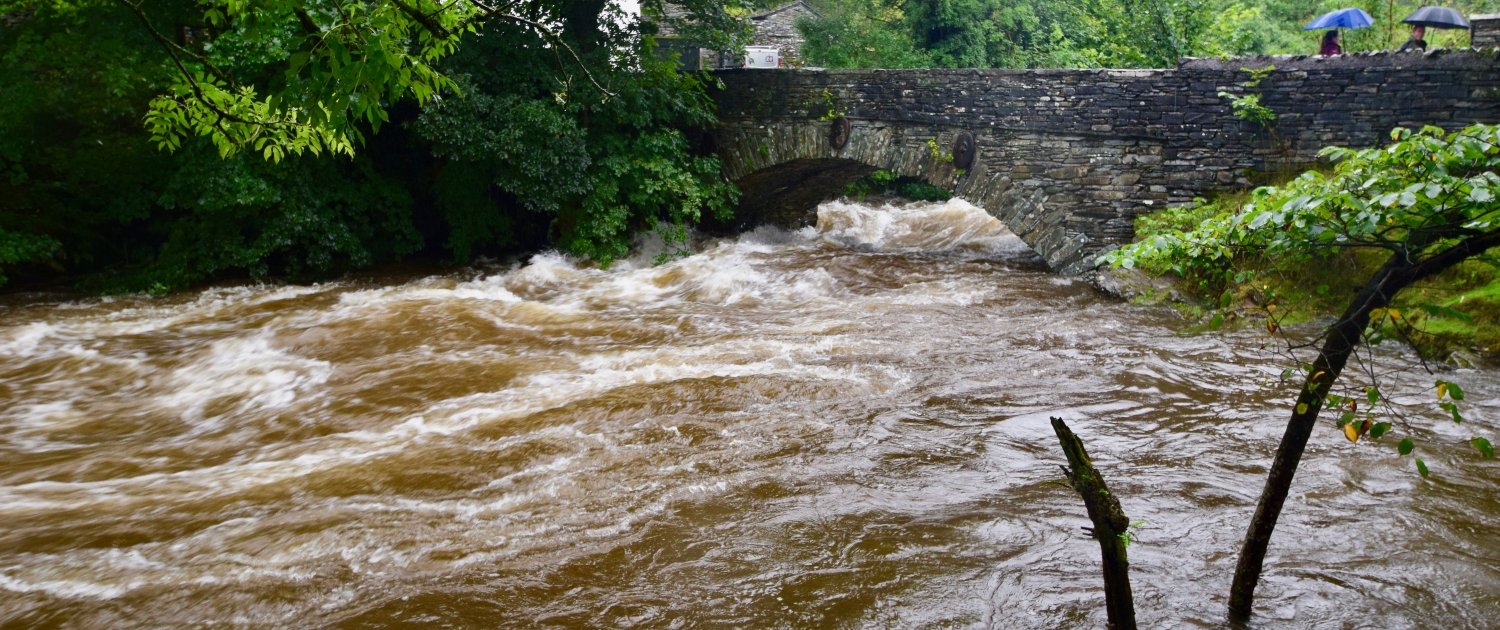What are the human and physical factors that affect flood risk?
River discharge is the volume of water that flows in a river channel and is measured in cubic metres per second. An increase in discharge causes river levels to increase. Flooding occurs when the bankfull capacity of a river is exceeded (water spills over the banks of the river). There are a range of physical and human factors that affect flood risk.
What are the physical factors that affect flood risk?
Prolonged rainfall
Soil becomes saturated after prolonged rainfall. This leads to an increase in surface run-off as rainfall can no longer infiltrate the soil. This leads to more water entering the river channel, increasing the likelihood of flooding.
Heavy rainfall
Heavy rainfall can result in water arriving too quickly to infiltrate the soil. This increases surface run-off, leading water to reach the river channel quicker, resulting in a greater risk of flooding.
Geology
Impermeable surfaces such as clay and granite do not allow infiltration, leading to greater surface run-off. The risk of flooding increases as water reaches the river channel quickly, increasing discharge and the risk of flooding.
Relief
Water can move swiftly downhill in regions with steep terrain, such as mountains. The steeper the slope, the more rapid the water flow into a river channel, increasing the risk of flooding.
What are the human factors that affect flood risk?
Landuse
Urban development affects water movement as well. Hard, non-absorbent surfaces like concrete, asphalt, and drainage systems can speed up water flow to rivers. Plus, the scarcity of greenery means less rainwater is absorbed or evaporated. Drains also increase water flow into surrounding rivers, increasing the flood risk.
Agricultural practices can influence how water moves. For instance, fields without crops, especially during winter when soils are wet, can quickly channel water. Also, ploughing down slopes can form small channels that accelerate water flow directly to rivers.
Deforestation
Vegetation, including trees, intercepts rainfall, slowing its movement. Some of this water is stored before evaporation returns moisture to the atmosphere. Trees also absorb water from the soil, allowing greater infiltration into the soil and reducing surface run-off. When vegetation is removed, infiltration and interception are reduced and surface run-off increases. Without trees, more water flows directly to rivers, raising the potential for flooding. This leads to a greater risk of flooding as more water reaches the river channel.
Related Topics
Use the images below to explore related GeoTopics.


